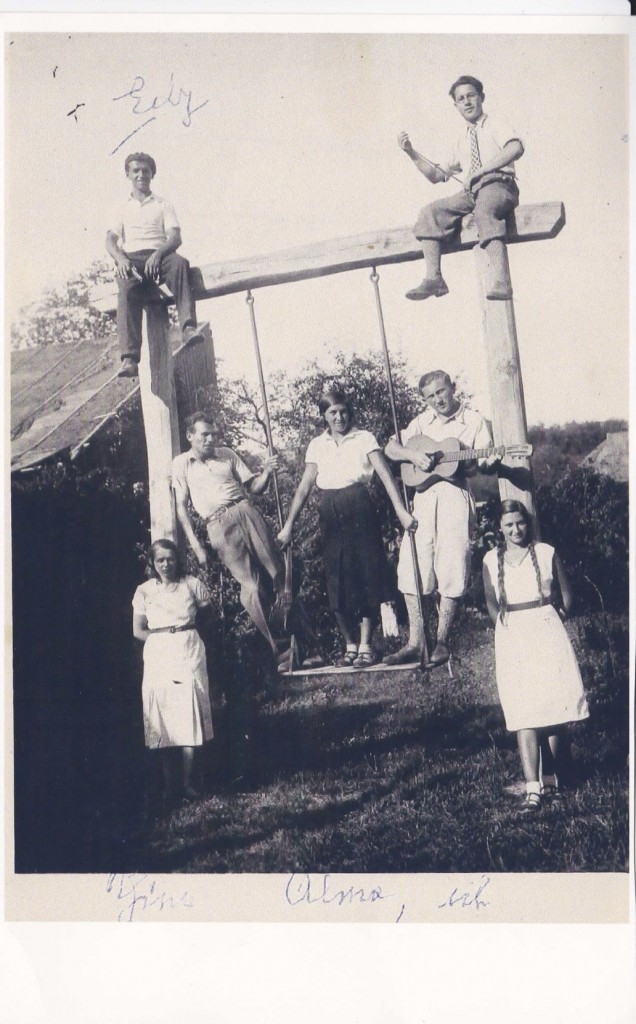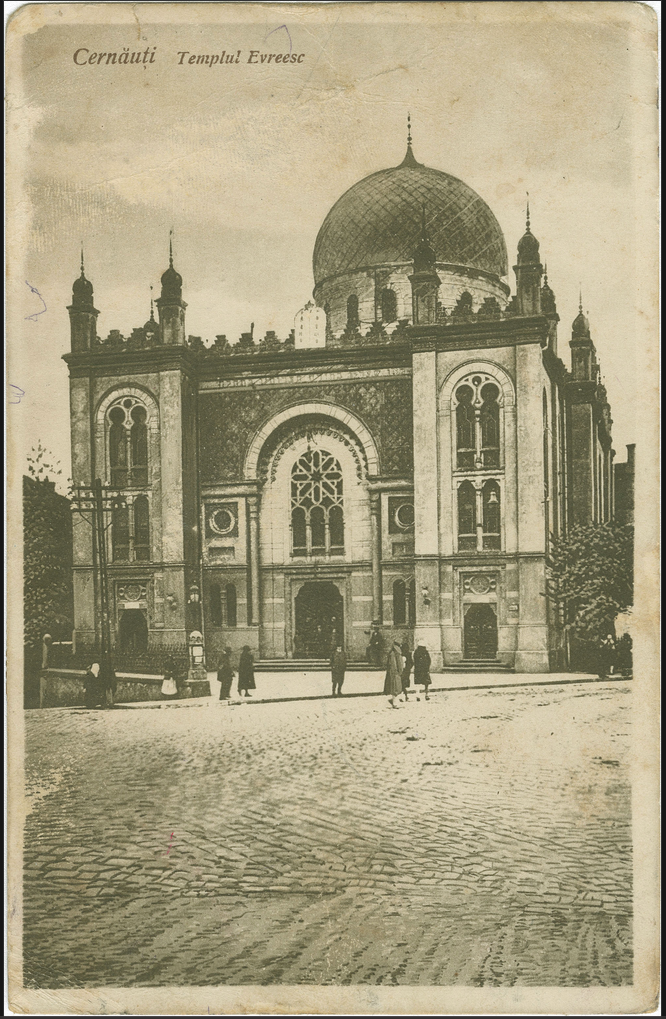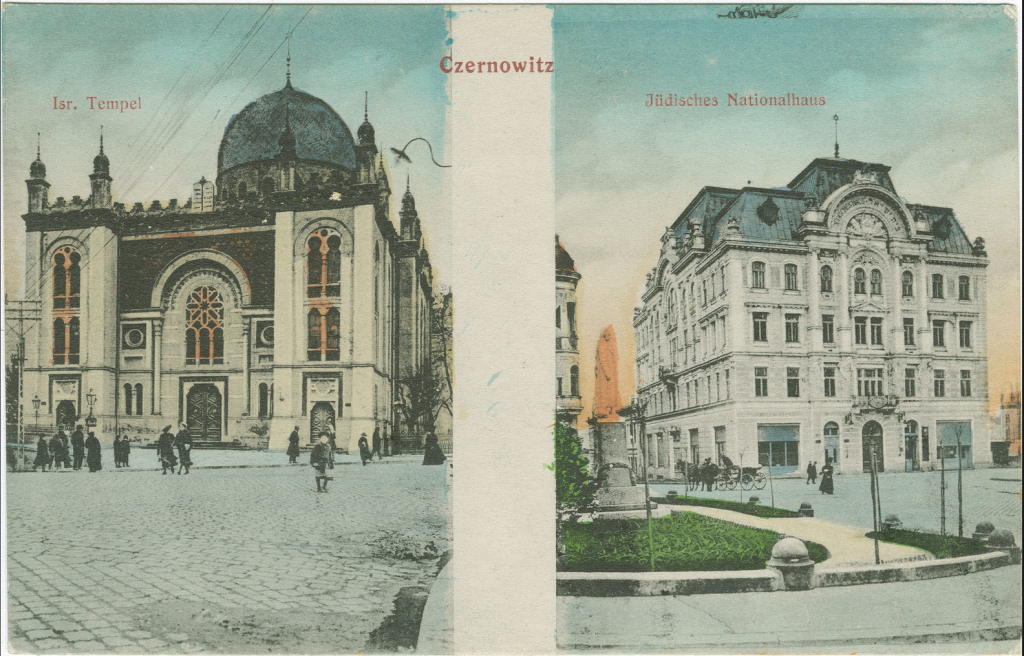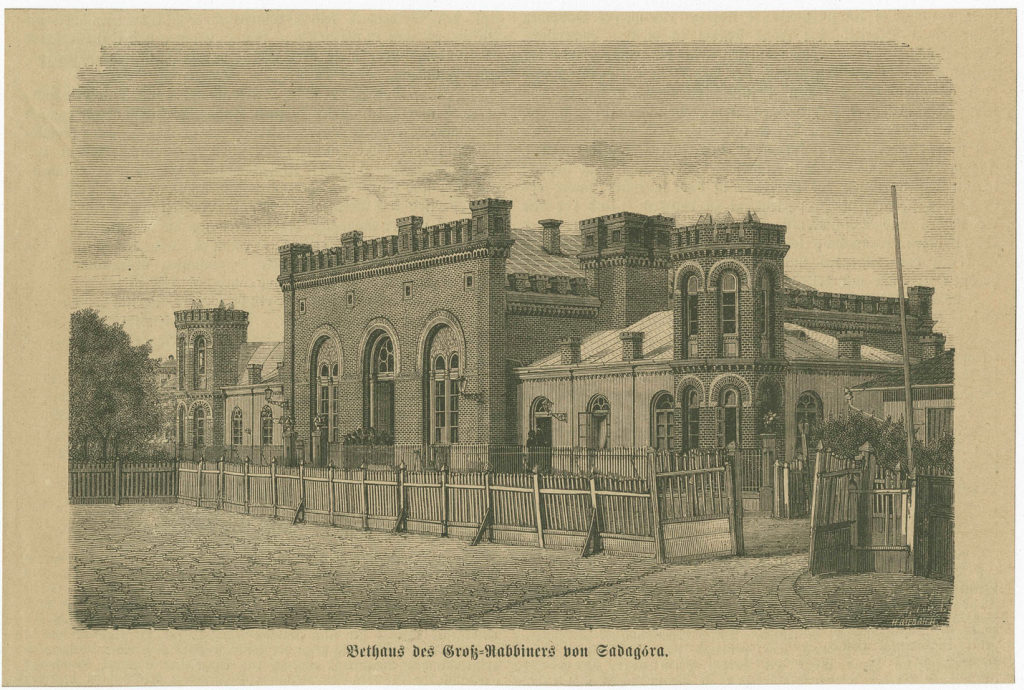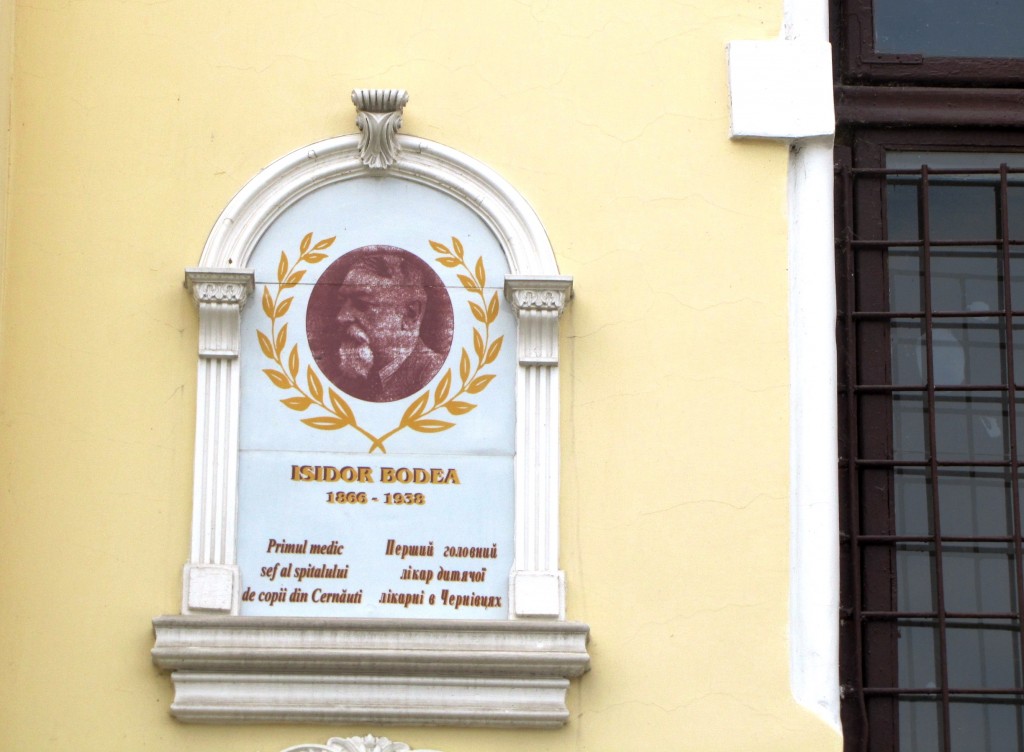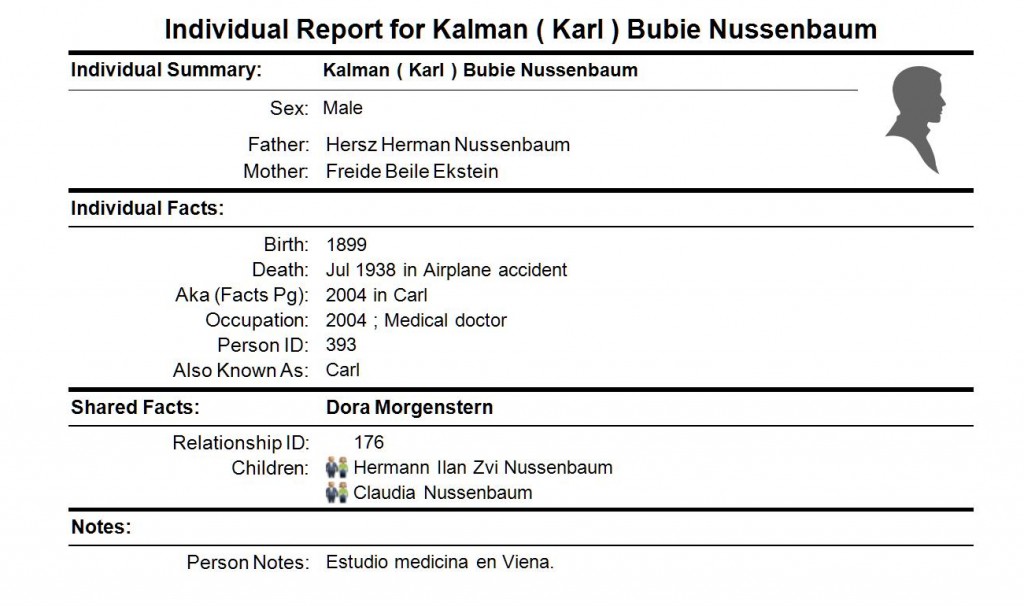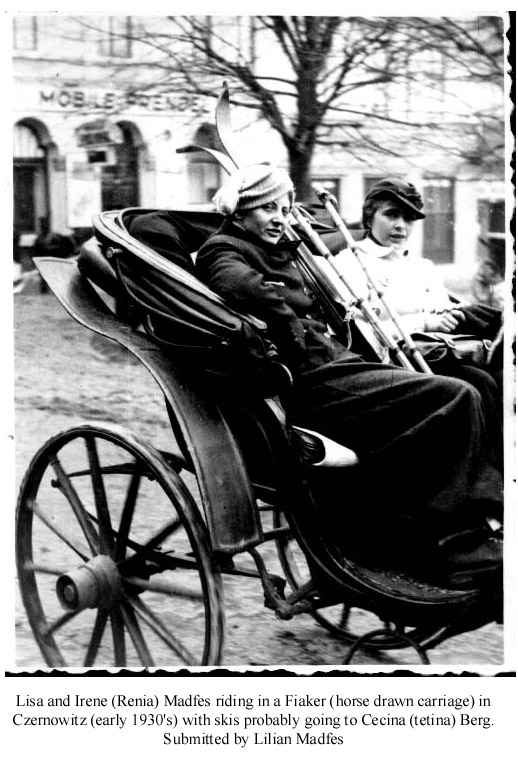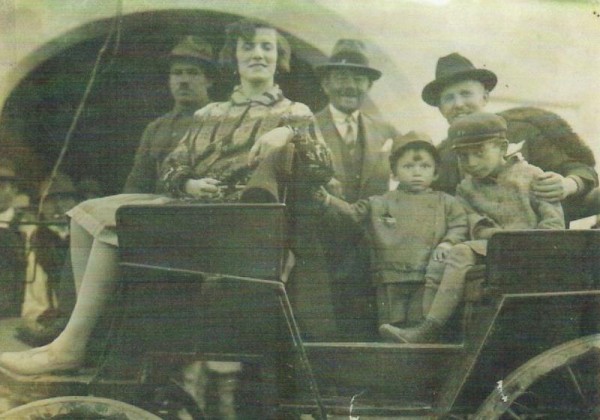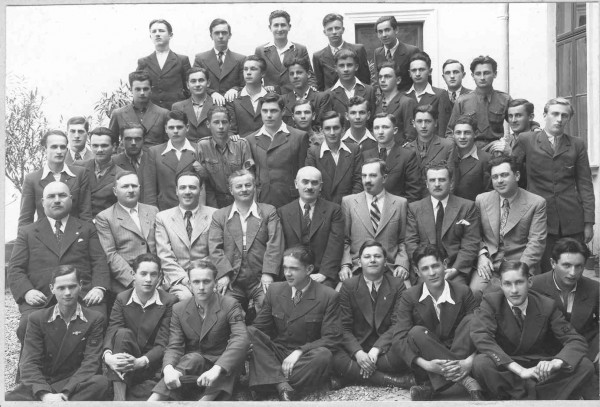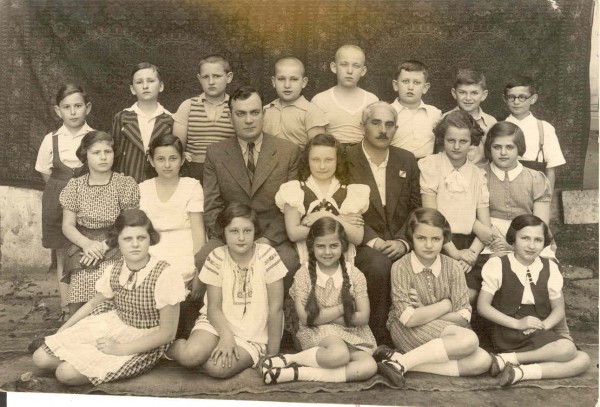 Steve Lasky (Museum of Family History): This one was taken from the Forverts of June 16, 1929. No other information. The photo came from the pictorial page entitled, “Old Beauty and Charm Contest.” The contest was contested by the Forverts. Her name was Sidy Dankner. I wonder whether anyone knows this family…..
Steve Lasky (Museum of Family History): This one was taken from the Forverts of June 16, 1929. No other information. The photo came from the pictorial page entitled, “Old Beauty and Charm Contest.” The contest was contested by the Forverts. Her name was Sidy Dankner. I wonder whether anyone knows this family…..
Tag Archives: Old photo (before 1945)
Bertha Fogel of Czernowitz

From the Forverts, New York, N.Y., of September 26, 1926
Courtesy: Steve Lasky • Museum of Family History
Happy Days of Youth
Czernowitz – In a garden.
Happy days of youth. Unusual “arrangement” and setting – Edy Wagner, head of the Balalaika orchestra, who died too young, top left, my husband’s mother Alma Wagner in the middle, on the right her sister Ruzia Wagner with her famous pigtails, the rest are friends. Both Alma and Ruzia, were very gifted, played the guitar and the balalaika, accompanying themselves to a multitude of Yddish songs. Alma had a beautiful voice and had had some lessons with Joseph Schmidt when he was still a cantor. Alma had a great repertoire and sang and played often for her friends. She passed on her singing gift to our daughter Nadine.
Gabriele
Maximilian Hauster, born on 26.11.1909 in Czernowitz, Deported to and Perished in Auschwitz in 1943
This is my uncle Maximilian Hauster, born in Czernowitz on 26.11.1909, deported to and perished in Auschwitz in 1943. Does anybody out there recognize the (students) beret Maximilian wore on that photo, which he presented to the authorities at the time of immigration to Belgium in 1929?
More details on Maximilian’s fate are available at
http://hauster.blogspot.de/2013/10/auschwitz-seventy-kilometers-east-of.html
as well as for in total 104 Bukovinians, who were deported – as my uncle – via Mecheln in Belgium to Auschwitz:
http://czernowitz.blogspot.de/2013/12/mecheln-auschwitz-1942-1944-destruction.html
Only two women and two men out of 104 deportees survived after 8 May 1945: Sara Adler and Theresia Breitner from Czernowitz, Wilhelm Berler from Nepolokoutz and Juda Meier Fleischer from Siret. 96,2% of the people originated from Bukovina deported on in total 28 transports were wiped out.
Ten Picture Postcards from Bukovina
Czernowitz Cemetery Transcription Project
After too many years, the Cemetery database project is nearing completion. There are just about 3000 burials remaining to index. (For those who aren’t familiar with it, results are posted to The JewishGen Online Burial Registry at <http://www.jewishgen.org/databases/Cemetery/>.) Transcriber Noam Silberberg recently spotted an unusual monument in Area 102, recording the passing of Dr. Karl Nussenbaum, who died in a plane crash in 1938. Does anyone remember or know anything about this event?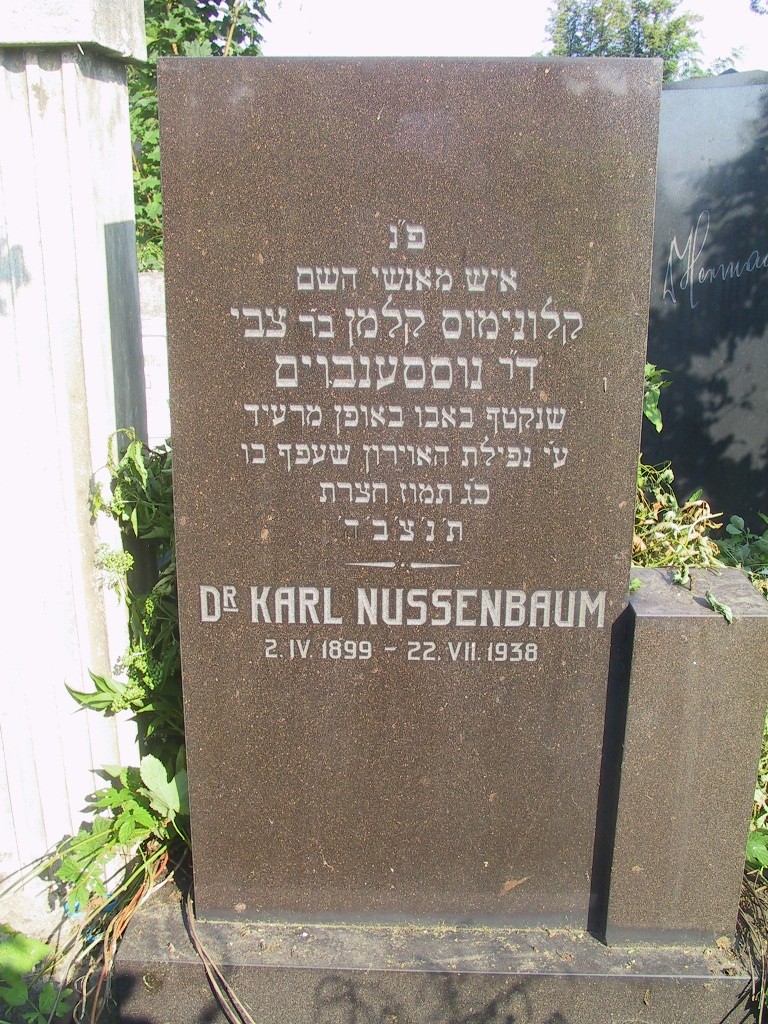
I’d be interested to know more!
Bruce Reisch
April 25, 2015: 21:00 ET:
Noam Silberberg send the following related information:
Coach Ride in Czernowitz

Dow Friedman: “Photo in the Horetchawald – Isiu Engler, husband of Mania (Maria) (neé Kuperman) eldest sister, my mother, Genia , Dow and my father, Itzik.”

Mimi Taylor: “‘Shopping’ from either 1935 or 1936. In the front is Frieda Jagendorf, in the back are my maternal grandparents Saul-Leib and Scheindel Steinmetz.”
Maccabi Czernowitz Football Team in the Nineteen-Twenties
First Autobus Lines in Czernowitz
Putting into operation of 10 autobuses, bearing the car numbers 310-319 by I.E.C.M. [Electromechanical Corporation of the Municipality of Czernowitz] on August 26, 1933, servicing three permanent and two seasonal bus routes. The autobuses, Type Fiat 622, assembled in Brașov, were dark red, had a 45 HP engine, 19 seats on luxury leather benches, ventilation systems and double doors, manually or automatically operated by the driver. The bus garage has been erected next to the tramway depot.
Source: http://www.transira.ro/bb3/viewtopic.php?t=4706
Der Omnibus
Durch einige Hauptstraßen der Stadt eilt seit einigen Tagen der städtische Omnibus. Der Anfang ist gemacht: Das Verkehrsnetz der Straßenbahn ist um wenige Linien erweitert worden. Daß es nicht Straßenbahnlinien sind, die, die mit der elektrischen Tramway befahren werden, sondern Omnibusse, tut weiter nichts zur Sache, denn nach den äußeren Erfahrungen des Straßenbahnverkehrs ist die Ersetzung von Straßenbahnlinien durch Omnibusse praktisch, rentabel, dem Verkehr zuträglicher und für das Publikum geeigneter. Was seit Jahren angestrebt wurde, nämlich die Erweiterung des Straßenbahnnetzes, ist also endlich durchgeführt, man muß sich über diese Errungenschaft freuen und die Tat soll anerkannt werden.
Aber was wir mit Bedauern sehen, ist, daß das Publikum den Omnibus meidet, jedenfalls zaghaft den Straßenbahnwagen betritt und im großen und ganzen eine abwartende Haltung einnimmt. Seit mehr als dreißig Jahren ruft die Stadt nach der Erweiterung des Straßenbahnnetzes, endlich ist die Ausdehnung erfolgt, aber für den Czernowitzer gilt hier das Wort: Omnibus ist Omnibus und Tramway ist Tramway. Oder im weiteren Sinne: der Omnibus ersetzt nicht die Tramway. Es ist eine Auffassung, die dieser Stadt paßt und es wäre ein Wunder, wenn es anders wäre. Aber man darf nicht verzagen, hier muß Erziehungsarbeit geleistet werden, es muß dem Czernowitzer beigebracht werden, daß er endlich das hat, wonach er seit Tag und Jahr schreit, das moderne und billige Verkehrsmittel, das alle Verbindungen kreuz und quer schafft und das berufen ist, den Verkehr und damit auch das wirtschaftliche Leben zu fördern. Es muß auch hier der Grundsatz gelten, daß nicht der Verkehr die Tramway geschaffen hat, sondern die Tramway den Verkehr schaffen muß, und daß das, was heute leider noch nicht zu hören ist, nämlich die Zunahme des Verkehrs mit dem Omnibus, in paar Wochen oder in paar Monaten eintreten wird. Diese Erziehungsarbeit muß die Tramwaydirektion vornehmen. Dazu ist notwendig, daß der Omnibus sich auch an bestimmte Abfahrtzeiten gewöhnt, nicht an einer Station stehen bleibt und eine Ewigkeit wartet, bis genug Gäste kommen, ferner daß die Station genau bezeichnet wird, also richtige Haltestellen etabliert werden, kurz, daß der Verkehr in ein System gebracht wird. Es darf nicht geschehen, daß die Konkurrenz heute und morgen auf den neuen und schönen Omnibus, eine Zier des Stadtbildes, höhnisch und verächtlich weise, als ob Czernowitz in einem Anfalle von Größenwahn sich einen modernen Omnibus angemaßt hat, der ihm nicht gebührt – nein, das darf nicht sein. Der Omnibus ist eine Notwendigkeit, kein Luxusstück, sondern so notwendig wie das Wasser. Es darf die Gemüsefrau von Rosch sich nicht vom Verkehr fernhalten. Der Omnibus ist nicht für die reichen und eleganten Menschen, sondern für das Volk da. Und weil es so ist, muß auch die Tarifbestimmung sich diesen Erfordernissen anpassen. Wir sehen, daß auch die Organe sich mit dem Omnibus nicht richtig befreundet haben. Der Schaffner sitzt im Wagen, wenn die Station kommt, er muß bei der Station aussteigen, beim Aus- und Einsteigen behilflich sein. Es muß also der richtige Dienst am Kunden versehen werden. Es sei das Geständnis abgelegt, daß wir für den Omnibus die größte Propaganda führen wollen, gerade deshalb, weil er noch heute gemieden wird. Der konservative Czernowitzer soll sich zuerst an das neue Verkehrsmittel gewöhnen und bald wird der Omnibus zu dieser Stadt so gehören, wie Czernowitz ohne den alten Rathausturm nicht zu denken ist.
Ego.

